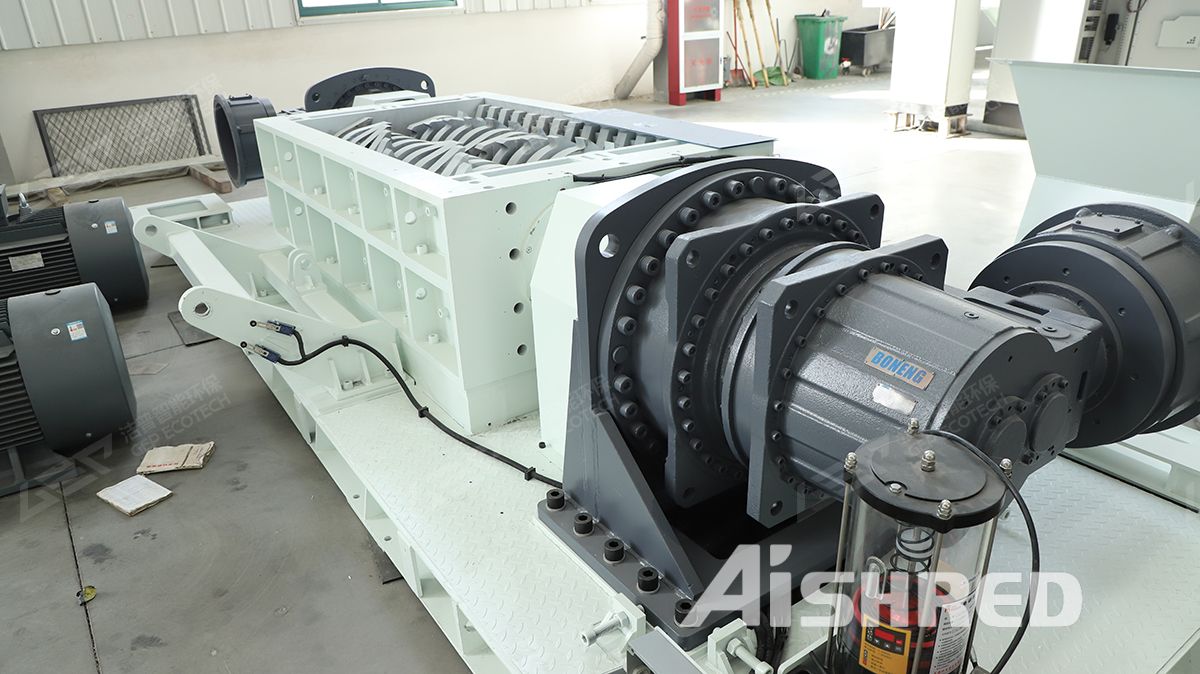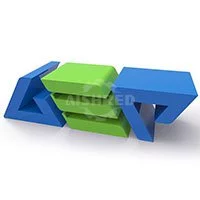Gypsum boards, commonly used in construction and renovation projects, produce a considerable amount of waste during their lifecycle. Efficient and eco-friendly disposal of gypsum board waste requires the use of specialized shredding equipment. The double-shaft shredder is a widely employed machine in this context due to its high capacity and effective shredding capabilities. This article focuses on maximizing the performance of a double-shaft shredder for gypsum board processing.

Optimization Strategies
- Shredding Parameters:
Optimizing shredding parameters such as blade speed, feed rate, and shredding time is crucial for achieving high production output. By conducting thorough experiments and analysis, the ideal combination of these parameters can be determined, ensuring optimal shredding efficiency while maintaining the desired particle size for the shredded gypsum material. - Shredder Design:
Enhancing the design of the double-shaft shredder can significantly improve its performance. This can be achieved by incorporating features such as a larger shredding chamber, improved blade configurations, and efficient material handling mechanisms. These design enhancements allow for increased throughput, reduced downtime, and improved overall shredding performance. - Advanced Technologies:
Embracing advanced technologies can further enhance the output and discharge efficiency of the double-shaft shredder. Implementing automated systems for feed control, monitoring and adjusting shredding parameters in real-time, and integrating advanced sorting and separation mechanisms can optimize the shredding process, resulting in improved production output and higher-quality shredded material.
Benefits of Optimization
Optimizing the double-shaft shredder for gypsum board processing offers numerous benefits, including:
- Increased Production Output:
By fine-tuning the shredding parameters and enhancing the shredder design, the production capacity can be significantly increased. This allows for the efficient processing of a larger volume of gypsum boards, leading to higher productivity and cost-effectiveness. - Improved Discharge Efficiency:
Efficient discharge of shredded gypsum material is crucial to maintain a smooth workflow. Optimization measures ensure that the shredder operates seamlessly, minimizing blockages and downtime. This results in a more efficient material flow, reducing bottlenecks and maximizing overall productivity. - Enhanced Shredded Material Quality:
Optimizing the shredding process results in the production of high-quality shredded gypsum material. The particle size can be controlled more precisely, allowing for better utilization of the shredded material in various applications, such as recycling or repurposing.
Potential Challenges
While optimizing the double-shaft shredder for gypsum board processing offers significant advantages, some challenges need to be addressed. These may include technological limitations, material variations, and equipment maintenance requirements. However, with proper planning, expertise, and investment, these challenges can be overcome to achieve the desired optimization goals.
Conclusion
The optimization of a double-shaft shredder for processing gypsum boards offers substantial benefits in terms of production output and discharge efficiency. By fine-tuning shredding parameters, enhancing the shredder design, and utilizing advanced technologies, operators can achieve higher productivity, improved material quality, and smoother material flow. Continuous investment in research and development is vital to unlocking the full potential of double-shaft shredders in gypsum board processing, leading to a more sustainable and efficient waste management solution.

